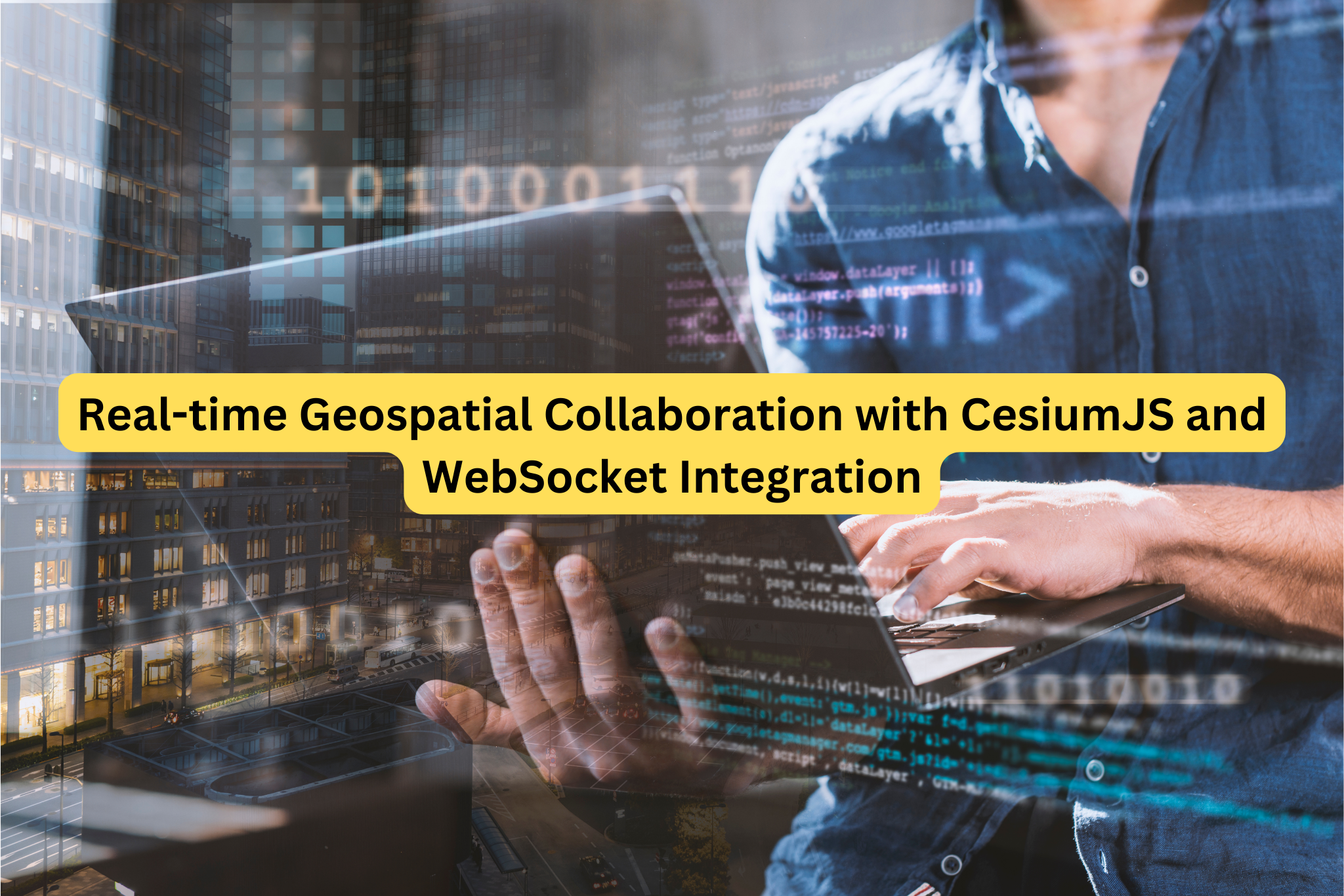Real-time Geospatial Collaboration with CesiumJS and WebSocket Integration
 Phạm Vân Anh
Phạm Vân Anh
Real-time collaboration in geospatial applications adds a dynamic layer to visualizations, and leveraging the capabilities of CesiumJS with WebSocket integration brings this collaborative experience to a new level. In this comprehensive guide, we'll explore the steps to implement real-time geospatial collaboration using CesiumJS and WebSockets.
Understanding the Foundation
CesiumJS Overview:
CesiumJS is an open-source JavaScript library designed for creating 3D globes and 2D maps. Its capabilities extend to visualizing geospatial data in an interactive and immersive 3D environment.
WebSocket Integration:
WebSockets facilitate bidirectional communication channels over a single TCP connection, enabling real-time data exchange between clients and servers.
Enabling Real-time Collaboration
Initiate CesiumJS
Create a Cesium globe or map within your HTML to serve as the foundation for geospatial visualization.
Set Up WebSockets
Establish a WebSocket connection from each client to the server:
Javascript
const socket = new WebSocket("ws://yourserver.com/socket");
Listen for Cesium Events
Implement event listeners for Cesium events such as scene.postRender, viewer.cameraChanged, etc.
Emit WebSocket Events
Within Cesium event listeners, emit WebSocket events and pass relevant data:
javascript
socket.emit("eventName", { data: event.data });
Server-side WebSocket Handling
On the server, use a WebSocket library to listen for events from clients and broadcast them to all connected clients:
javascript
socket.on("eventName", data => {
// Broadcast event to all clients
socket.broadcast.emit("eventName", data);
});
Client-side WebSocket Handling
On each client, listen for WebSocket broadcast events and update the Cesium globe/map accordingly:
javascript
socket.on("eventName", data => {
// Update Cesium globe/map based on data
});
Synchronize New Users
When a new user connects, broadcast their Cesium view/data to synchronize them with all existing clients.
Repeat for Additional Cesium Events
Extend the process for any additional Cesium events you wish to synchronize in real time, such as zooming, panning, or selecting features.
Explore Use Cases
Unlock the potential of real-time geospatial collaboration for scenarios like collaborative route planning, asset management, and emergency response.
Conclusion
By combining the powerful visualization capabilities of CesiumJS with the real-time communication provided by WebSockets, you've created a robust framework for collaborative geospatial applications. This step-by-step guide empowers you to implement and customize real-time synchronization, opening doors to a wide range of applications in the geospatial domain. Explore, innovate, and elevate your projects with dynamic, collaborative experiences.
Subscribe to my newsletter
Read articles from Phạm Vân Anh directly inside your inbox. Subscribe to the newsletter, and don't miss out.
Written by

Phạm Vân Anh
Phạm Vân Anh
Currently I am working as Marketing Executive at Bac Ha Software - Leading software development company in Vietnam https://bachasoftware.com/